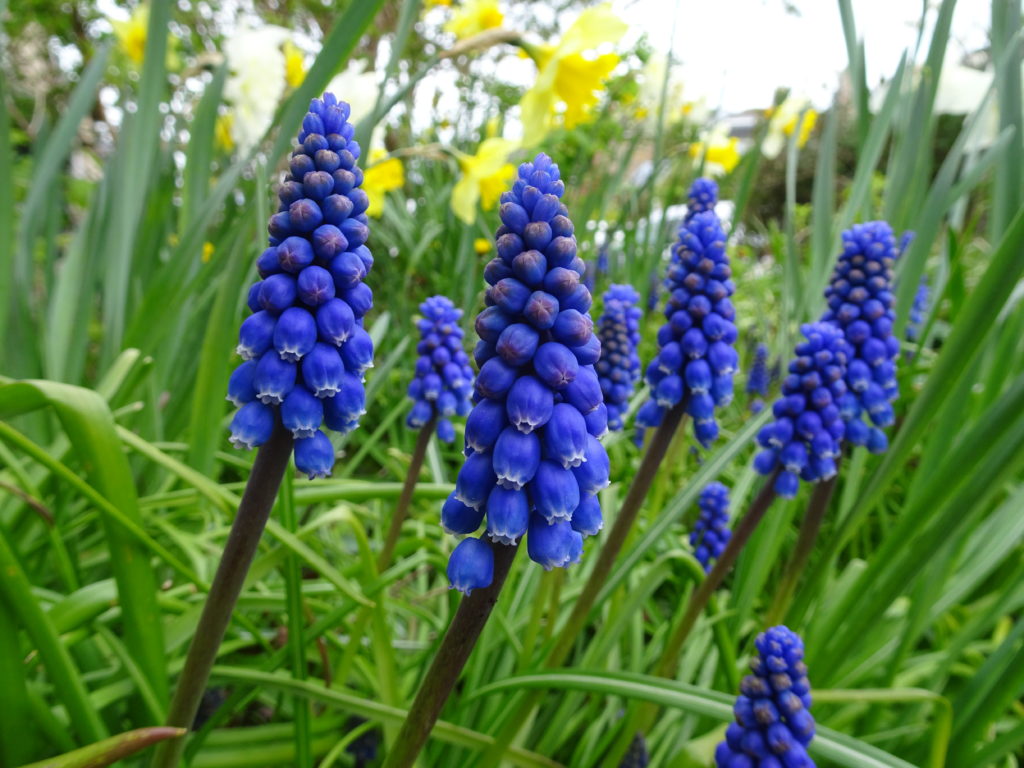Remembering the colours of the rainbow in the correct sequence is a memory challenged easily solved with this little rhyme ‘Richard Of York Gave Battle In Vain’, giving us – Red, Orange, Yellow, Green, Blue, Indigo and Violet. Although flowers come in every conceivable colour, it does seem to be the case that some colours are more elusive than others. True blues can be particularly hard to find and many blue flowers have the influence of red and violet in them. The “blue” roses are a case in point.
However, there are stunning pure bright blues to be seen at the moment in many gardens where swaths of grape hyacinths are blooming. The most commonly encountered garden grape hyacinth is Muscari armeniacum from the eastern Mediterranean. This tough little plant spreads by self-seeding profusely in sandy soils that are similar to its native habitat. When it blooms en masse the flower heads, each like a small bunch of blue grapes, give a welcome reminder of spring.
Some selections of the garden grape hyacinth are fragrant and the name of the genus Muscari is derived from the Greek word muschos meaning scent. The word musk is derived from the same root.

You will encounter a variety of grape hyacinths in gardens as there are around 40 wild species and numerous cultivars of garden origin. An albino form with white flowers is quite popular. The closely allied genus Leopoldia is known as the tassel grape hyacinth and in these plants the upper and lower flowers have a different form. The upper flowers are on long stalks and provide the tassel appearance of these dainty little plants.
On warm sunny days watch out for solitary bees visiting the flowers of grape hyacinth. The early emerging red mason bee is one that I have seen on grape hyacinths.
